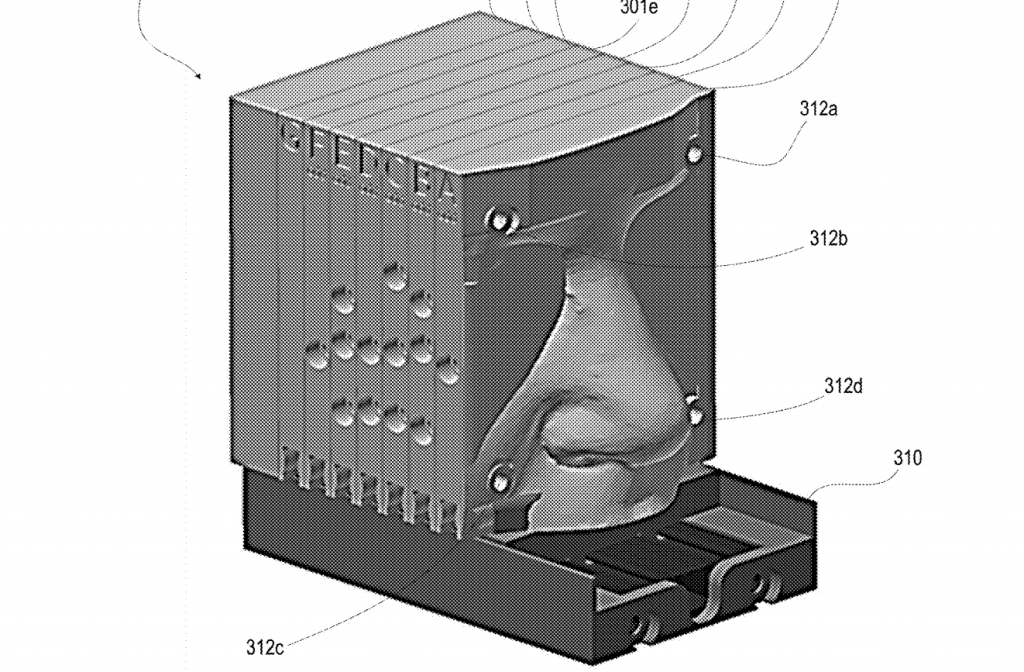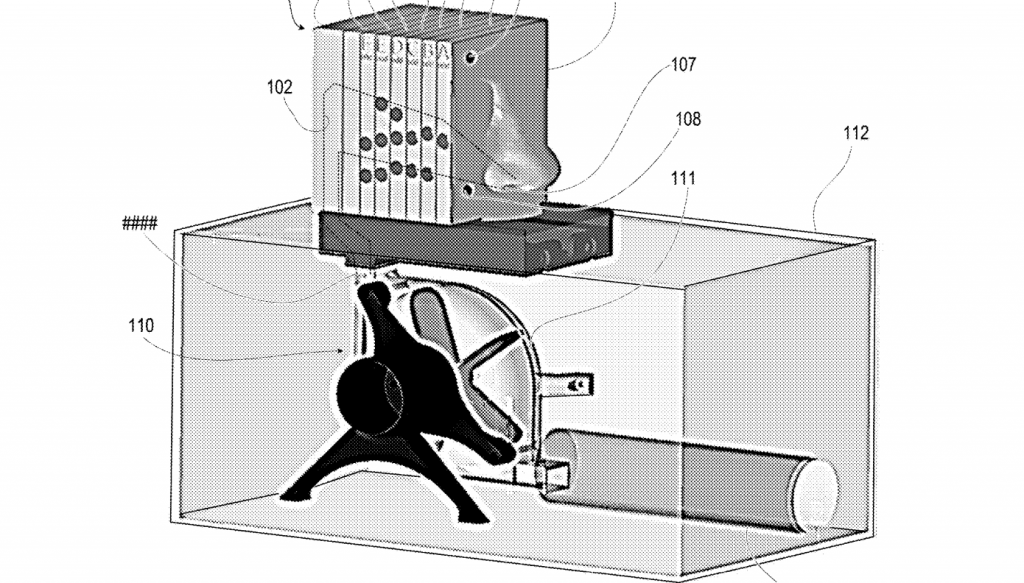Researchers from the U.S. Air Force Research Laboratory (AFRL) in Dayton, Ohio have filed a patent application for a 3D printed nose simulator.
Dubbed the Nose Simulator with Multisampling Modes for Airstream Evaluation, the faceless beak is intended as a precise scientific replica of the upper respiratory system, allowing researchers to evaluate the effects of air quality on respiratory physiology. The inventors, AFRL’s Angela Dixon and Saber Hussain, believe the 3D printed nose could be great for studying breathing-related hazards such as hypoxia, airborne nanoparticles, and volatile organic compounds.
The researchers state, “Unlike typical nasal cast models, this innovative biohybrid upper respiratory model allows for more accurate representation of physiological breathing functions coupled with spatiotemporally relevant tissue analysis. Here we have married electronic and biological elements in a proposal to develop a robotic biohybrid.”

Replicating the human nasal cavity
The internal anatomy of the human nose is more complex than one might initially expect. It has certainly been attempted before, but very few bioengineered systems built to model the intricacies of the nasal cavity have been precise enough to use in advanced air quality studies. Furthermore, while previous models have largely been created by studying those who have very kindly donated their bodies to science, the rise of modern 3D and CT scanning technology allows us to work with volunteers who are a little more alive.
As such, the AFRL’s nose is based on diagnostic imagery of a real human nasal cavity and designed to be printed on Stratasys PolyJet and Carbon DLS 3D printers. To give the device autonomous breathing capabilities, the researchers also attached a fan system to mimic realistic air flow.
Inside the nose itself is a set of airstream probes designed to sense parameters such as the velocity of the air, as well as detect specific nasal tissue interactions. This serves to map where and when the inhaled gases and particles make contact with the crevices of the nose.
Taking a deeper dive into the nostrils, we can actually see that the simulator comprises eight individual modular slides with probe holes to house the sensors. Each segment of the stack allows the researchers to study a very particular section of the nasal cavity, and they are sealed together using airtight gaskets to form one continuous channel.
The researchers conclude, “We strive to raise the achievement bar for bioengineering technologies a bit higher by pushing the development of more life-like robotic devices that doubly supply advanced mechanical function and biological architecture that are native to humans. Ongoing work will include validation of this nose simulator system by characterizing the achievable flow rates within the device.”

3D printing in the Air Force
While the nose simulator may be considered a little off the wall, it is one of many 3D printing-related projects undertaken by the Air Force in recent years. Last year, a research team from the Air Force designed and 3D printed a surgical retractor using a desktop resin 3D printer. The medical instrument is intended to be used in logistically challenging environments where it may not always be possible to restock medical supplies using conventional methods.
Elsewhere, at the Air Force Sustainment Center, a team of engineers became the first to successfully test a 3D printed metal component inside a U.S. Air Force aircraft engine. The milestone bodes well for spare part production for the TF33-P103 engine, which powers aircraft such as the B-52 Stratofortress.
Subscribe to the 3D Printing Industry newsletter for the latest news in additive manufacturing. You can also stay connected by following us on Twitter and liking us on Facebook.
Looking for a career in additive manufacturing? Visit 3D Printing Jobs for a selection of roles in the industry.
Featured image shows the 3D printed nose simulator. Image via U.S. AFRL.



